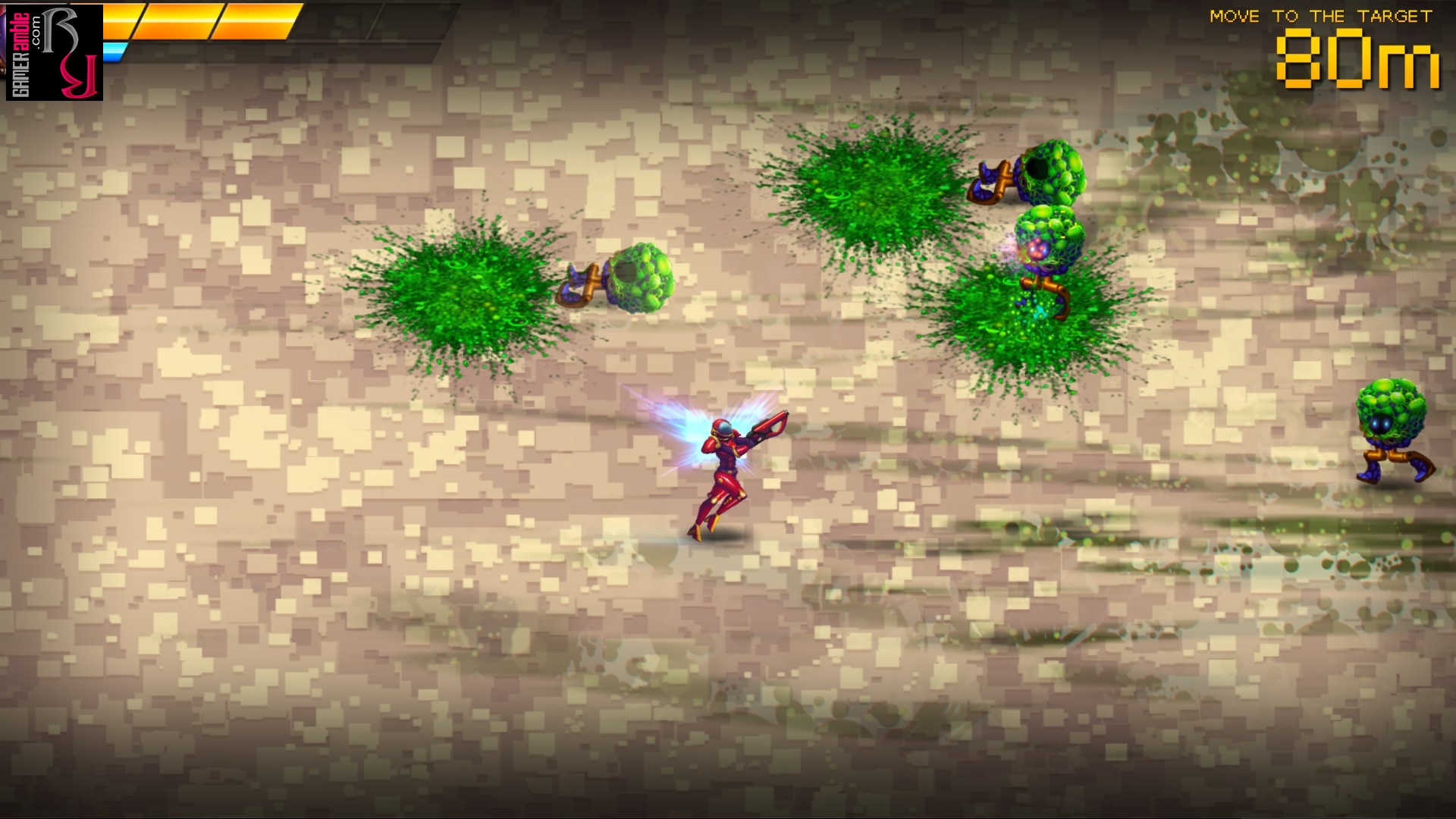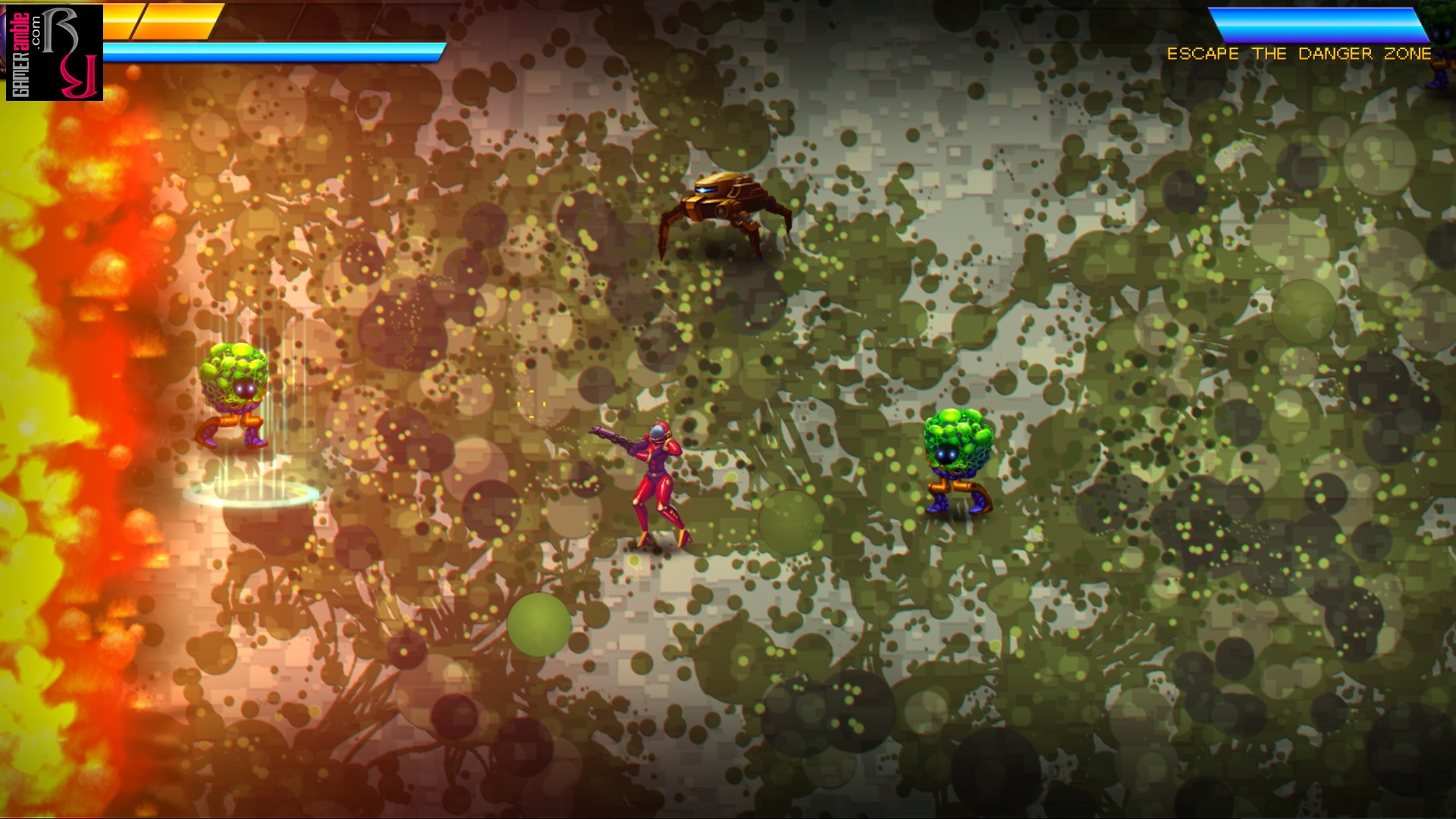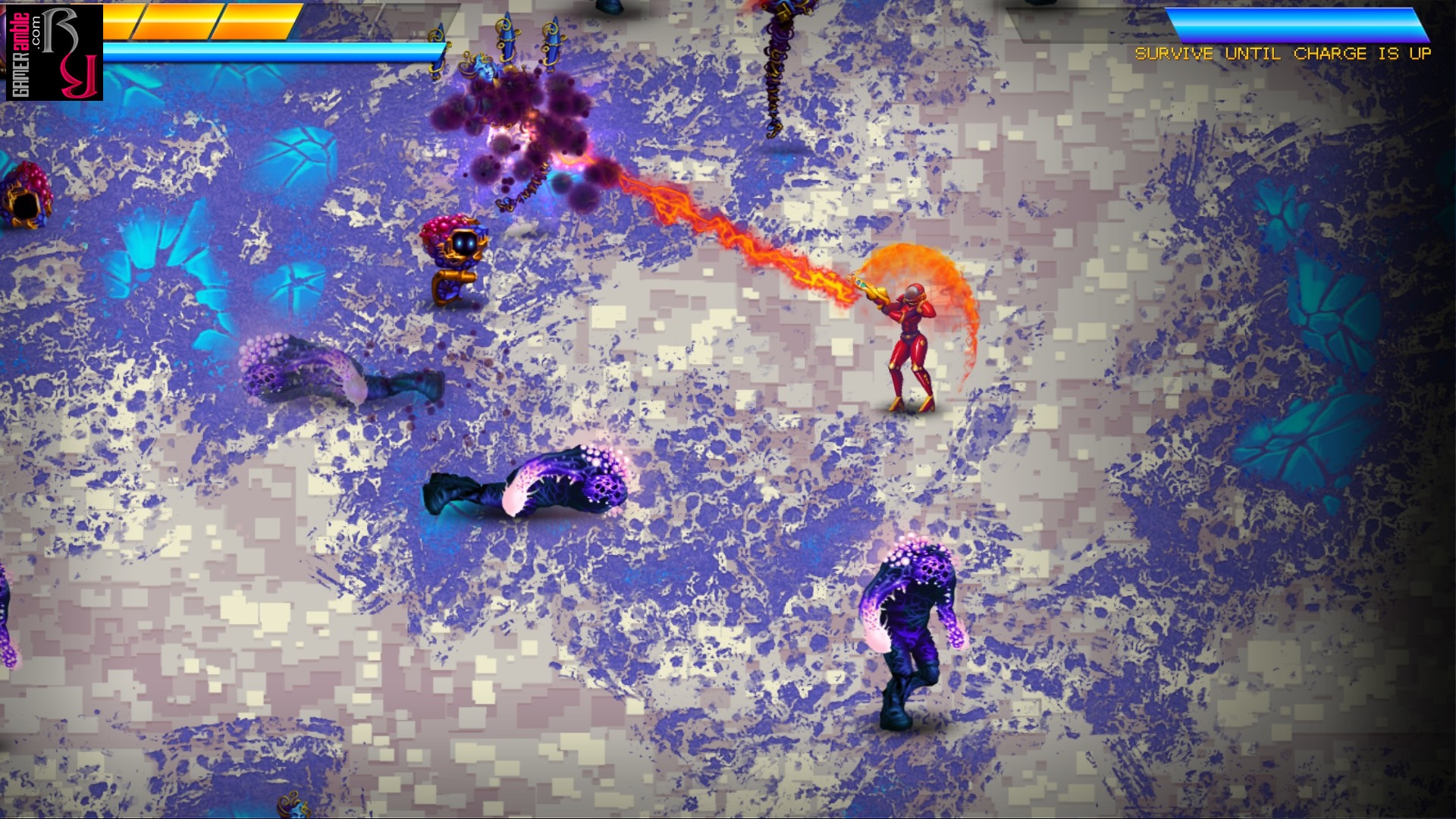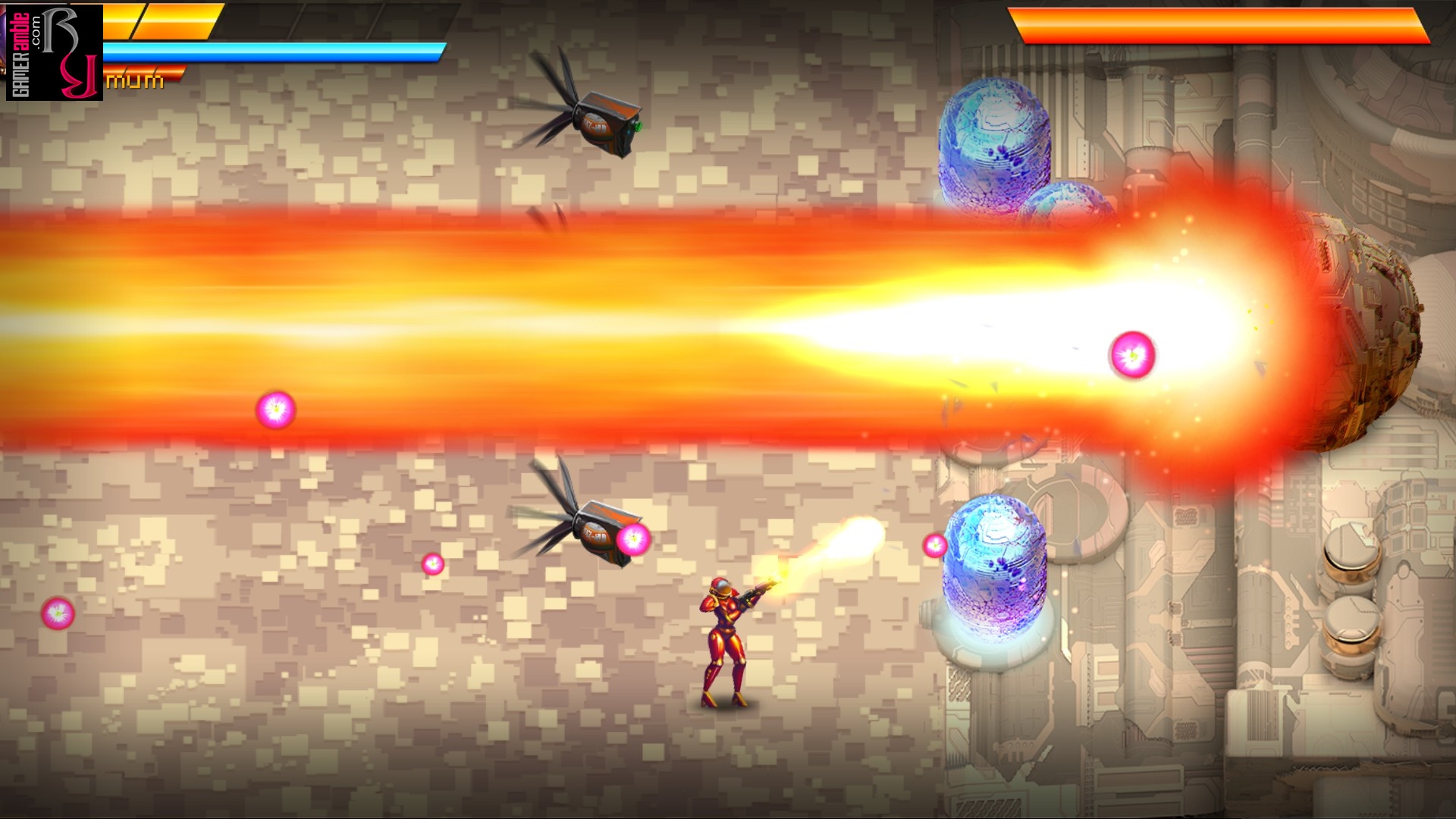Anstorm
Developer: Shiv | Publisher: Shiv | Release Date: 2018 | Genre: Action / Top Down Shooter / Indie | Website: N/A | Purchase: Steam
The discovery of a wormhole with an artificial planetoid inside it prompts the research ship, “Anstorm,” to investigate. Unfortunately, neither the research team nor the drones sent to the surface ever returned and landing would put the Anstorm at unnecessary risk. This prompts Jan Loeb, a crew member onboard the Anstorm to volunteer using her personal orbital dive system to make the trip to the surface. Her suit sensors will scan her surroundings and stream the results back to the ship. Jan believes this data will be valuable enough to justify the risk, but what she discovers could have dire consequences for everyone.
Although Anstorm boasts an interesting storyline, which is continually fleshed out via conversations between the crew before each mission, the actual gameplay is that of a simple arcade shooter. Playing as Jan Loeb, players must avoid or shoot the hordes of enemies trying their best to make her planetary excursion a short one. The bulk of the game is made up of the campaign mode, which features six chapters, each with ten levels and a big boss. There’s actually some decent variety to the campaign levels with each level tasking players with missions such as killing all enemies, surviving for a certain amount of time, destroying some structures, collecting data, or simply running in one direction to escape destruction. These levels can typically be completed in a minute or two and offer a decent amount of challenge. The bosses are also pretty neat and have the obligatory patterns that must be observed before focusing on their weak spots.
In addition to the campaign mode, Anstorm also features a Survival Mode and Labyrinth Mode. Survival mode challenges players to stay alive for as long as possible, while Labyrinth mode is slightly more interesting and features constantly moving terrain, which players must try and traverse for 30 seconds. Once the time is up players are beamed to the next labyrinth to repeat the process again until they make a misstep and plunge to their doom. Labyrinth mode is by far the most interesting of the two modes as Survival mode only serves to highlight the flaws of the game. Chief amongst these is the fact that the game feels very claustrophobic thanks to the limited view range and large enemies. This is made worse by the fact that enemies are not only hard to dodge, but many of them also leave a deadly mess on the floor when they die. These explosions or pools of acid can remain on the screen for a few seconds and cause instant damage when touched. The game does feature power-ups in the form of new weapons, weapon upgrades, and more, but unfortunately, these have a nasty habit of laying in the pools of goo. The power-ups disappear after a short time, which is frustrating when it is impossible to get to them.
During campaign mode, the short duration of the levels makes it easier to deal with the annoyances, but they still rear their ugly heads. Jan can survive three hits by enemies but can lose these three bars of health in a heartbeat thanks to the short invincibility duration after each hit. Players have a dedicated dodge button, which has a cool-down timer, but Jan is not invincible while performing this mode, which limits its usefulness. To make matters worse, later levels not only flood the screen with enemies but also pull stunts such as cutting the size of the playing field in half or placing an obscuring fog over parts of it.
Visually, Anstorm is a mixed bag with beautiful images displayed for some of the cut-scenes while the in-game graphics look like something from a 90s Shareware title. It makes it a bit hard to take the epic science fiction storyline seriously when the gameplay consists of Jan being chased around by what looks like broccoli and raspberries on cybernetic legs along with their Super Saiyan cousins. Enemies feature “normal” and “elite” versions, but players will have seen most of them long before reaching the end of the game. The levels themselves consist of flat tiles that are surrounded by a deadly fog from which enemies appear. The themes of these tiles change, but none of them stand out as particularly memorable.
The audio in Anstorm is serviceable and features a few different music tracks along with some pretty generic sound effects. There’s no speech, but this is understandable as the game was made by a solo indie developer. The controls are what one would expect from a top-down shooter, although the collision detection did feel a bit iffy at times, especially when it came to the floor hazards. Anstorm contains a range of weapons, including a rocket launcher, Gauss gun, shotgun, minigun, and plasma, gun but the appearance of these and other power-ups tend to be very erratic. We found ourselves completing most of the campaign levels with the default gun, while in survival mode it’s possible to either find three power-ups in a row or spend almost the whole time with none appearing. The survival mode was the only place where we were able to fully upgrade the weapons, which increased their speed and power. Unfortunately, most rounds in this mode last only about two minutes before the game goes completely overboard with the amount of enemies and hazards it throws at players. This is a pity as the campaign mode has no replay value and the Survival mode is what usually keeps players coming back for more.
Despite its flaws, we did have fun with Anstorm and the game can be quite addictive. Unfortunately, there are also far better titles in the genre, which makes it hard to recommend Anstorm, even with its cheap price tag. Fans of the genre who are willing to lower their expectations will appreciate the story, interesting bosses, and simple gameplay. Sadly, apart from the Labyrinth levels, there’s nothing we haven’t seen done much better before.
System Requirements
- OS: Windows 7
- Processor: Dual Core 2.4 Ghz
- Memory: 1 GB RAM
- Graphics: Latest graphics drivers
- DirectX: Version 9.0c
- Storage: 300 MB available space
- Sound Card: DirectX® Compatible
- OS: Windows 10
- Processor: Intel Core i3-4170 or AMD FX-8300 or higher
- Memory: 2 GB RAM
- Graphics: Latest graphics drivers
- Storage: 300 MB available space
- Sound Card: DirectX® Compatible



















